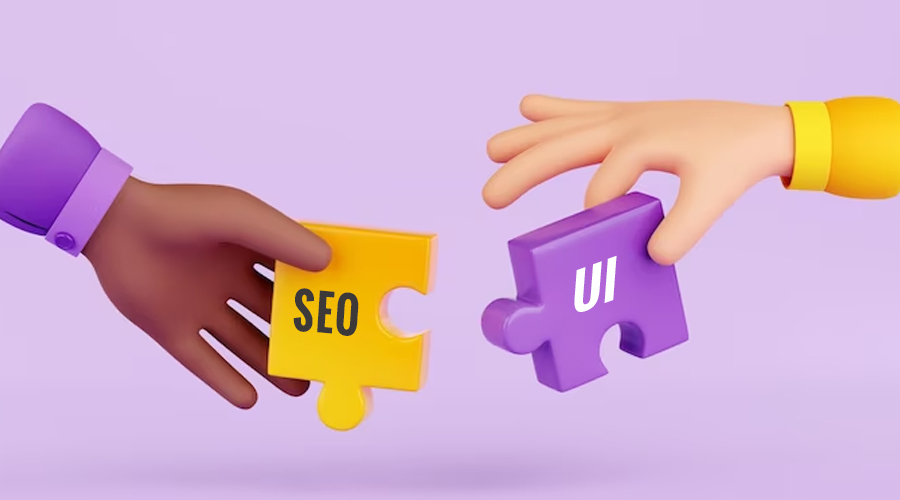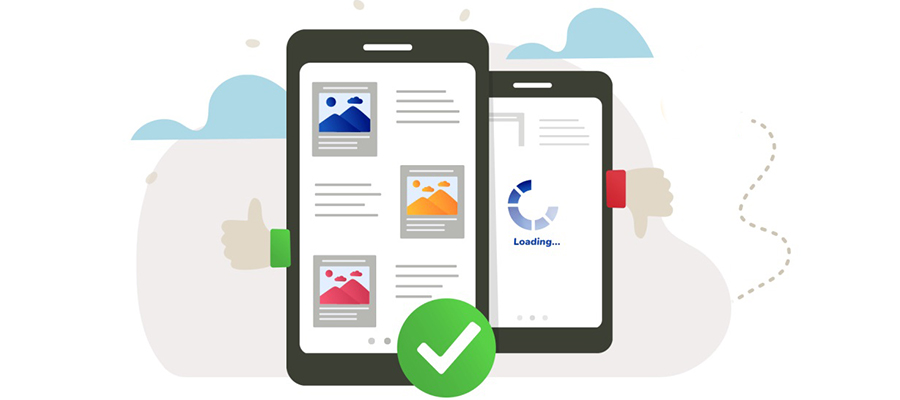Talking about SEO is incomplete without UX because SEO comes from user-friendliness. UX and SEO go hand in hand. Good SEO ranks come from user-friendliness and user-friendliness comes from good User experience (UX).
User experience or UX what matters only for SEO-how? Search engines like Google, and Bing use algorithms to find the best possible solution for their users and make them satisfied with the results. Here the importance of SEO lies.
UX and SEO: The Secret Weapon to Win the SEO game
What is UX Design For Websites?
UX (User experience) of a website refers to users’ journey with a website’s interface. In other words, UX design defines how conveniently users can use or utilize a website and get what they want.
Website UX involves website navigation speed, page loading time, overall design, functionality, usability content, mobile responsiveness, etc.
You may have heard about UI or user interface. In most cases UI and UX are used synonymously but, they are not the same. UI is part of UX design that interacts with users and engages users. UI includes the texts, graphics, animations, design style, buttons, and layouts, etc.
UI helps UX to implement UX plans and aid in achieving the UX goal in reality.

Why does UX Design Matter for Search Engine Optimization?
Search engine optimization generates website traffic and drives attention to a website organically. But how exactly do search engine optimization techniques function? This process improves a website’s overall quality so that it performs well and responds to search engine users’ inquiries. That is how SEO helps a website perform well on SERP and outperform competitors’ websites.
In a nutshell, SEO tactics boost website performance and quality and elevate SEO rank.
UX design plays a crucial role in satisfying users and elevating the SEO rank. That is why, you can regard UX and SEO are like best friends.
So, How Does UX Elevate SEO? Let’s Check!
- 88 % of customers Do Not return To Website With Bad UX
So, even if you have started receiving web traffic organically due to paid ads, that will not last long with bad UX. A bad user journey will result in consumers abandoning your site, which will increase bounce rates.
Having an increased bounce rate will give a negative signal to search engines and impact the SEO rank.
2. A 0.1-Second Improvement in Site Speed Results in Better Sales
Website speed improvement is a critical part of technical SEO and User experience. Website speed optimization improves both UX and SEO.
Users stay longer on a website that loads faster. If it is taking too much time, it will make users restless. They will like to leave the site and affect the Average session duration. Hence, slow website speed can harm UX, and customers’ journey and hamper SEO rank.
3. 94 % of People Don’t Trust Websites with Outdated Information
People don’t trust a website and in fact likely to avoid website that does not provide up-to-date information. We have told you before content is a crucial aspect of UX as it provides information to customers and adds value.
An outdated website harms the website goal, leads to customer dissatisfaction, raises the question of website credibility, and affects website traffic. Hence it hampers overall SEO rank.
How Does UX Impact SEO?
Do you bad UX is the core reason that takes on-site search engine optimization to the back seat? Here is a quick list of factors that impact both SEO and UX.
Top reasons why a visitor leaves a website:
- 88.5 % of customers leave a website for slow loading.
- 73.1 % of customers leave a website for non-responsiveness.
- 61.5 % of customers leave due to bad navigation.
- 38.5 % of customers leave for outdated design.
- 34.6 % of customers leave the website for poor content structure.
- 3.8 % of customers leave a website due to obstructive audio and video.
[Source: userguiding]

UX and SEO: How To Improve With UX?
We have learned how SEO and UX relate. Now, one thing we must know here is that UX improves SEO using SEO UX best practices. So what are those practices? Let’s know all of them.
Improve User Engagement
How users interact with a website significantly impacts its SEO performance. That is why you have to design a user interface that is engaging enough to make viewers stay longer on the site. This will increase the average session duration and decrease the bounce rate. Hence it will give a positive signal to search engines that your website is user-friendly.
Optimize Page Speed
Fast-loading pages improve user experience and enhance rank on SERP for targeted search intents. So, while designing a website ensure your website and web pages load at an optimum speed.
Make sure the website loading time and page speed do not make them wait too long.
Decrease Bounce Rate with an Engaging UX
Bounce rates are a crucial indicator of SEO ranks. A website with poor UX gets high bounce rates and impacts SEO negatively. Hence, improving bounce rate is important with mobile responsiveness, page speed optimization, quality content, deep linking, and seamless navigation.
Get Mobile Responsive Design
Mobile-responsive designs are crucial for both UX and SEO as we can’t deny the importance of mobile-first indexing. Having a mobile-friendly design is important to get a good rank faster on SERP. Google has made the mobile-first indexing field mandatory or by default for new websites. Do you know what mobile-first indexing is?
Google says “Google predominantly uses the mobile version of a site’s content, crawled with the smartphone agent, for indexing and ranking. This is called mobile-first indexing.”
Get a Seamless Navigation and Structured Site Map
Intuitive navigation and a structured site map make websites self-explaining and easy to access. They help users find what they need faster and make them highly engaged and active with the site.
These features make a website user-focused reduce the bounce rate and improve SEO ranking.
Content Accessibility
Ensuring content is easily accessible and legible benefits both UX and SEO. It makes website information, resources, and all content made available to all users and satisfies users. That is how it improves website SEO rank.
Pro Tips
- Use semantic HTML tags and readable fonts
- Achieve a good readability score
- Use transcripts, and easy-to-understand captions,
- Use meaningful link text
- Provide alt text for images
Click-Through Rate (CTR)
Improved CTRs are a result of good UX. It can be the cause of good SEO rank. Hence, you should give enough focus on improving Click-through rates or CTR.
Start with writing compelling headlines and meta descriptions, utilizing engaging alt texts first. Then, include powerful CTAs, implement schema mark-ups, and optimize your content for featured snippets. Last but not least, promote your existing content on social media sites and leverage the power of Google Analytics.

Improve Dwell Time
Dwell Time is one of the crucial customer behavioural matrices that impacts both UX and SEO. Basically, it is the time that elapses between the time users click a page and the time they return to the original result page (SERP).
Improving dwelling time needs no special tactics; you can improve them by improving the above factors.
Take Help Of Google’s Core Web Vitals (CWV)
Refer to the UX matrices that Core Web Vitals (CWB) provides. It is an amazing tool from Google that gives amazing insights into improving UX aspects where your website takes the backseat.
How Do You Implement Core Web vitals for UX Enhancement?
All you need to do just measure the current performance and take note of the core matrices [Largest Contentful Paint (LCP), First Input Delay (FID), and Cumulative Layout Shift (CLS)]. Take needed actions and test them using multiple devices and networks. Then regularly monitor their performance and keep yourself updated with Google News.


